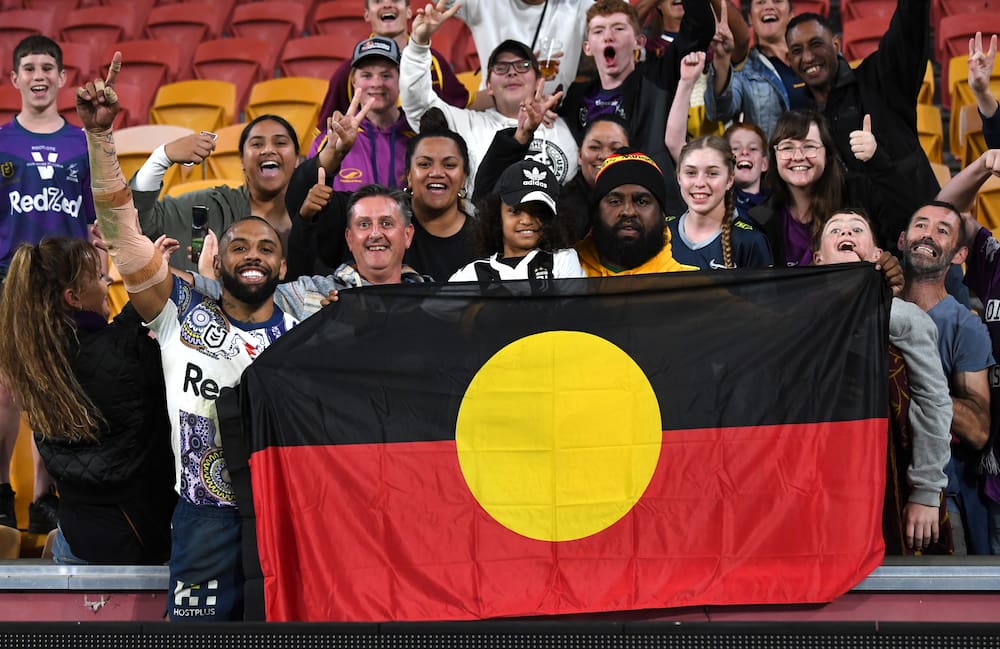The freeing of the Aboriginal flag for public use has been celebrated by advocates who have been pushing for its use in the public domain for years.
Laura Thompson was issued a cease and desist notice in 2019 after selling t-shirts with the flag on them, leading to her two-and-a-half year free the flag campaign.
“To know that all Australians can use it, and Aboriginal people can use it without payment or fear or permission, it’s a great day,” she told the ABC.
The flag was previously owned by the flag’s designer Harold Thomas and a non-Indigenous clothing company.
It is now freely available for public use after the federal government completed a $20 million deal to take ownership of its copyright.
It comes after a number of Indigenous groups were sent cease and desist warnings for using the flag in an apparent breach of copyright.
Minister for Indigenous Australians Ken Wyatt said the change was “profoundly important for all Australians”, adding “no one can take it away”.
“Over the last 50 years we made Harold Thomas’ artwork our own – we marched under the Aboriginal flag, stood behind it, and flew it high as a point of pride,” he said.
“In reaching this agreement to resolve the copyright issues, all Australians can freely display and use the flag to celebrate Indigenous culture.”
Carroll and Richardson Flagworld will remain the exclusive licensed manufacturer and provider of Aboriginal flags and bunting.
But Flagworld won’t restrict individuals from making their own flag for personal use.
As part of the deal, the Commonwealth will put all future royalties received from Flagworld’s sale of the flag towards the work of NAIDOC.
As well, an annual scholarship in Mr Thomas’ honour will be provided to Indigenous students and an original painting celebrating the flag’s 50th anniversary will be displayed by the government.
Mr Thomas said he will use $2 million to make an Australian Aboriginal Flag Legacy not-for-profit.
“The Aboriginal flag design is my dreaming, intertwined with my wife’s family and mine, our ancestral belonging,” he said.
“The flag represents the timeless history of our land and our people’s time on it. It is an introspection and appreciation of who we are. It draws from the history of our ancestors, our land, and our identity and will honour these well into the future.”
Prime Minister Scott Morrison was thankful the flag had been put in public hands.
“The Aboriginal flag will now be managed in a similar manner to the Australian national flag, where its use is free, but must be presented in a respectful and dignified way,” he said.
“All Australians can now put the Aboriginal flag on apparel such as sports jerseys and shirts, it can be painted on sports grounds, included on websites, in paintings and other artworks, used digitally and in any other medium without having to ask for permission or pay a fee.”
Labor frontbencher Tanya Plibersek also welcomed the decision.
“Many people were very surprised to know that the Aboriginal flag was copyrighted – not like the other Australian flags,” she told the ABC.
“The fact that this Aboriginal flag, such an important symbol for Australia, will now be treated in the same way as other Australian flags and be shown the same respect as other Australian flags is a great step forward.”
Get all the latest Canberra news, sport, entertainment, lifestyle, competitions and more delivered straight to your inbox with the Canberra Daily Daily Newsletter. Sign up here.



